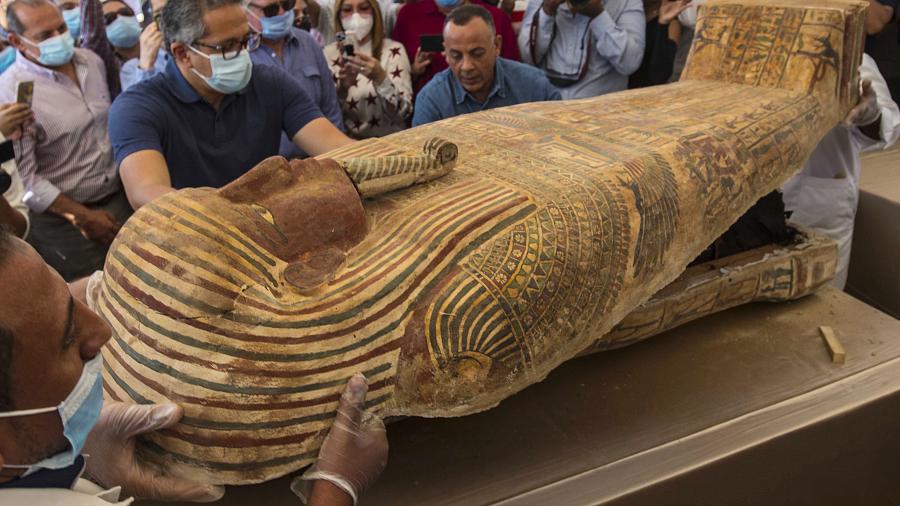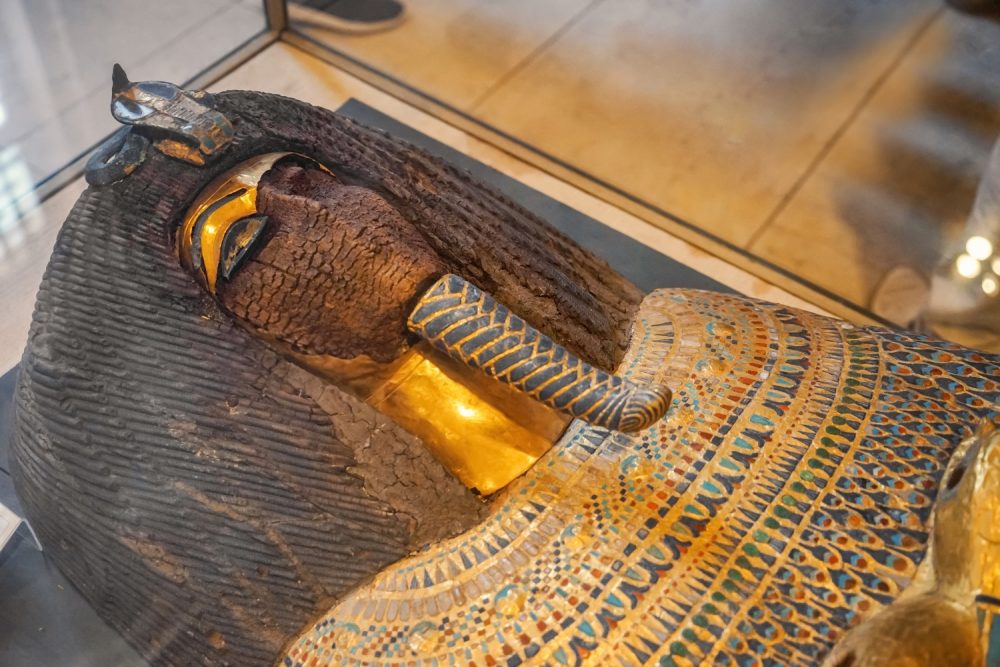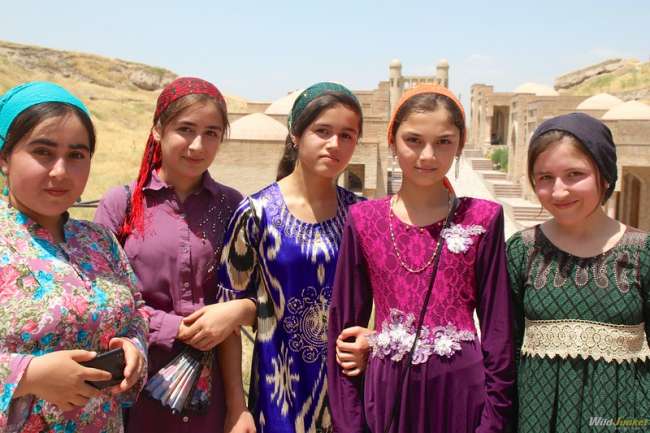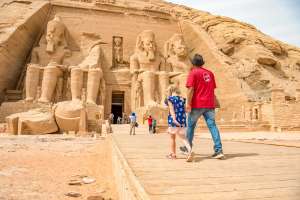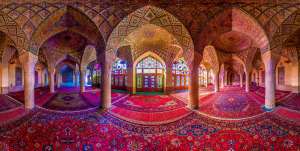The ancient sands of Egypt have long concealed mysteries that whisper stories of gods, kings, and civilizations far older than memory itself. Across millennia, these treasures have survived the desert’s fierce winds and time’s relentless erosion, standing as living monuments to human brilliance and devotion. The relics of ancient Egypt are more than just artifacts; they are bridges to a vanished world where myth and history intertwined. Modern Cairo’s busy streets and the timeless hum of the Nile now flow alongside these echoes of eternity, where colossal statues and cryptic tombs still command awe.
Exploring Egypt means stepping into a vast open-air museum, where every grain of sand seems to hold a fragment of legend. It’s a journey that connects travelers to an empire that reigned for over three thousand years—a civilization that defined architecture, astronomy, and the afterlife itself. Whether you come seeking adventure, cultural wonder, or to gaze in disbelief at the feats of human imagination, Egypt’s ancient world rewards you with discoveries that feel almost otherworldly.
Ancient Egypt may have vanished beneath layers of history, but the discoveries it left behind continue to reshape our understanding of civilization. For over three millennia, this extraordinary culture flourished along the Nile, creating monuments that still defy explanation. When Egypt fell under the rule of Greeks, Romans, and later Muslims, its sacred heritage became buried—both literally and metaphorically—beneath the weight of new empires.
Then, during the nineteenth century, the sands began to give up their secrets. Discoveries such as the Rosetta Stone, the Pyramids of Giza, and the glittering tomb of Tutankhamun ignited a new scientific fascination: Egyptology. These revelations opened windows into an ancient world once lost to myth, fueling not only global scholarship but also the imaginations of travelers, artists, and dreamers alike.
The 10 Most Astonishing Discoveries from Ancient Egypt
1. The Egyptian Pyramids at Giza
The Pyramids of Giza are perhaps the most iconic symbol of the ancient world, towering structures that have defied both time and logic. Built for three powerful pharaohs—Khufu, Khafre, and Menkaure—during the Old Kingdom between 2575 and 2130 B.C., these monumental tombs are enduring testaments to Egypt’s mastery of engineering and spiritual belief.
Even today, archaeologists debate how these colossal monuments were constructed. Ancient Greek historian Herodotus claimed that 100,000 men labored for twenty years to complete the Great Pyramid of Khufu, but modern research suggests smaller, specialized teams of skilled workers achieved the feat through extraordinary precision and organization. The Great Pyramid alone once soared over 480 feet high and covered more than thirteen acres of desert plateau.
When looters broke into the pyramids centuries ago, much of their treasures vanished, leaving behind hollow chambers and fragments of gold leaf. By the time modern excavations began in 1880, archaeologists could only guess at the wealth that once filled these eternal houses of kings. Yet even stripped of jewels and offerings, the Pyramids remain unmatched in their grandeur—a silent conversation between humanity and eternity.
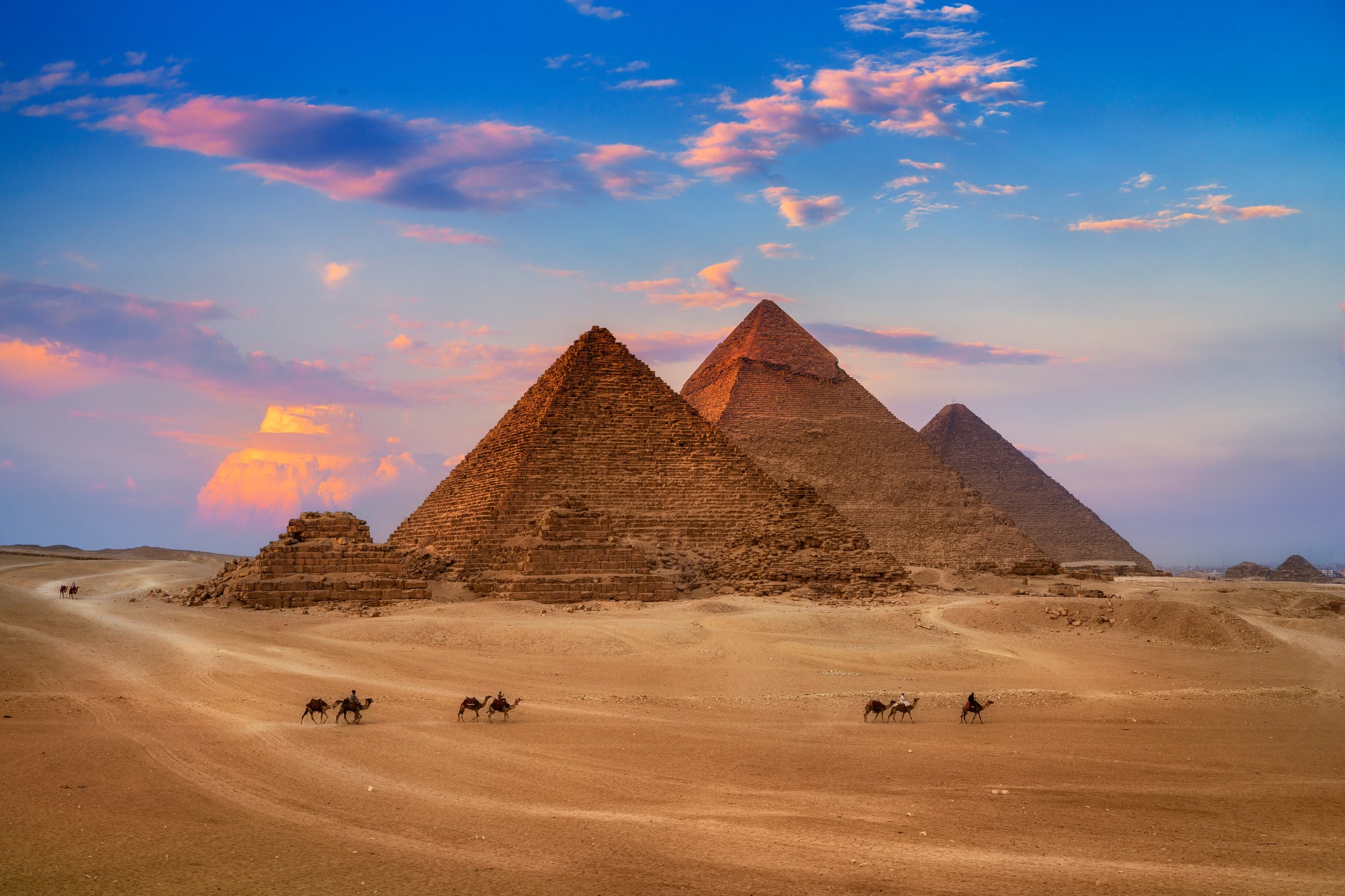
Photograph by Ratnakorn Piyasirisorost/Getty Images
2. Khufu’s Ship
Near the base of the Great Pyramid lies another of Egypt’s astonishing secrets—an ancient vessel built for the pharaoh’s journey through the heavens. Discovered in 1954, Khufu’s ship was buried in a sealed pit beneath layers of limestone for more than 4,000 years. Measuring nearly 140 feet in length and constructed from cedar wood imported from Lebanon, it was found in over 1,200 pieces, perfectly preserved by the dry desert air.
This magnificent ship, inscribed with the name of Pharaoh Khufu, was designed to accompany the ruler into the afterlife. Its craftsmanship reveals a mastery of maritime engineering far ahead of its time. The planks were lashed together without nails, relying instead on rope bindings that allowed the vessel to flex naturally with water currents.
Today, the fully reconstructed ship can be admired near its original resting place in the Solar Boat Museum, just meters from the Great Pyramid itself. Seeing it in person brings to life Egypt’s profound spiritual relationship with death and rebirth—where even a voyage through eternity demanded the perfection of design.
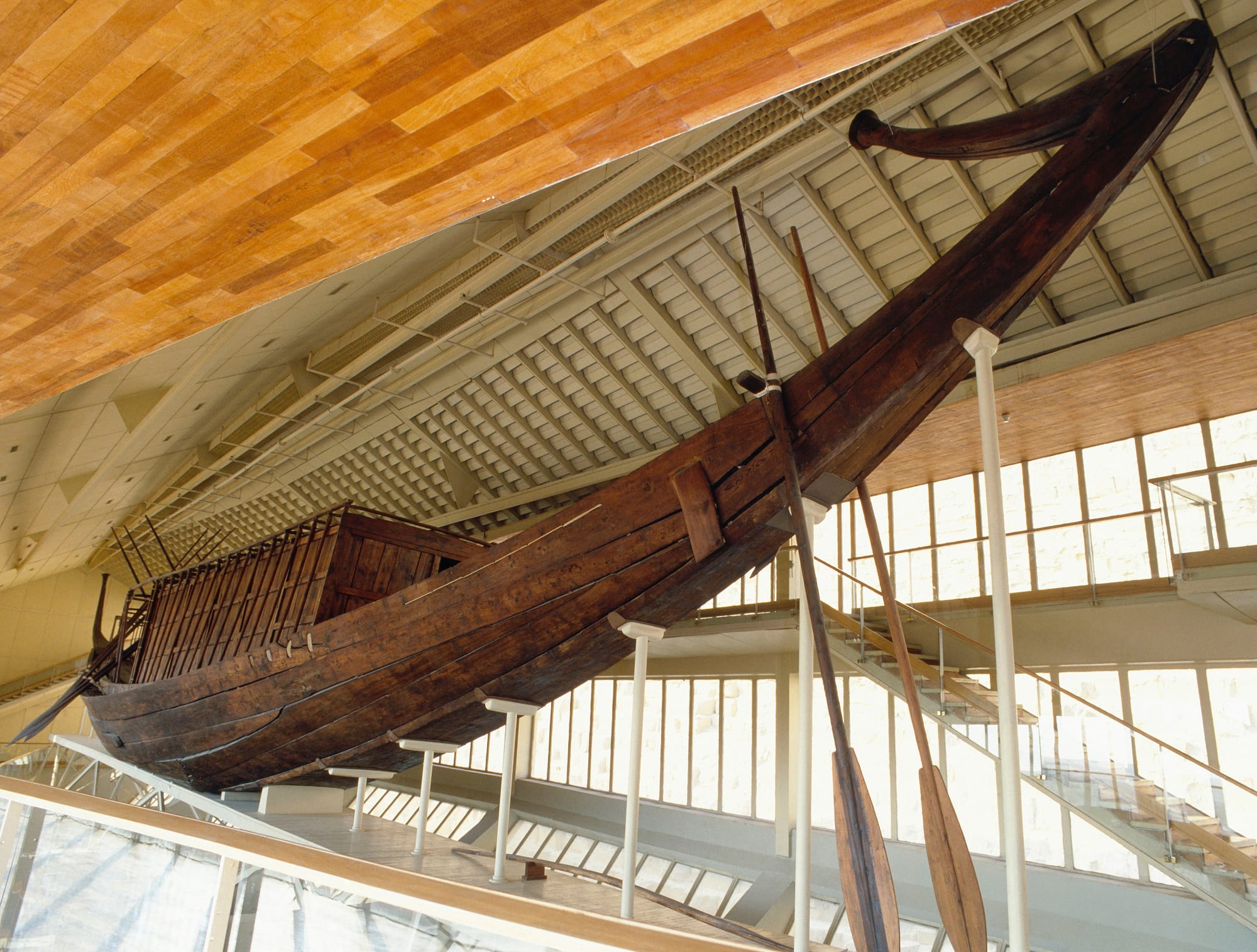
Photograph by Werner Forman/Universal Images Group/Getty Images
3. King Tut’s Tomb
Few discoveries have captured the world’s imagination quite like the tomb of the young pharaoh Tutankhamun. Hidden for over three millennia beneath the sands of the Valley of the Kings, it was rediscovered in 1922 by British archaeologist Howard Carter after years of patient excavation. The moment Carter peered inside and saw “wonderful things” became one of the defining events of modern archaeology.
Unlike most royal tombs, Tutankhamun’s burial chamber had escaped the ravages of looters. Its sealed doors protected an astonishing collection of treasures: golden chariots, jewelry, statues, and the now-famous golden death mask that has become an icon of ancient Egypt. Though Tutankhamun died at just nineteen, his tomb immortalized him as a symbol of the civilization’s wealth and artistry.
The discovery of Tutankhamun’s tomb did more than reveal royal artifacts—it provided scholars with unparalleled insight into the rituals of burial and belief. From the intricate hieroglyphics covering the walls to the carefully arranged funerary objects, every detail spoke of a society obsessed with the afterlife. Despite the legends of a curse, the real magic of the find lay in its illumination of a world that had vanished into myth.
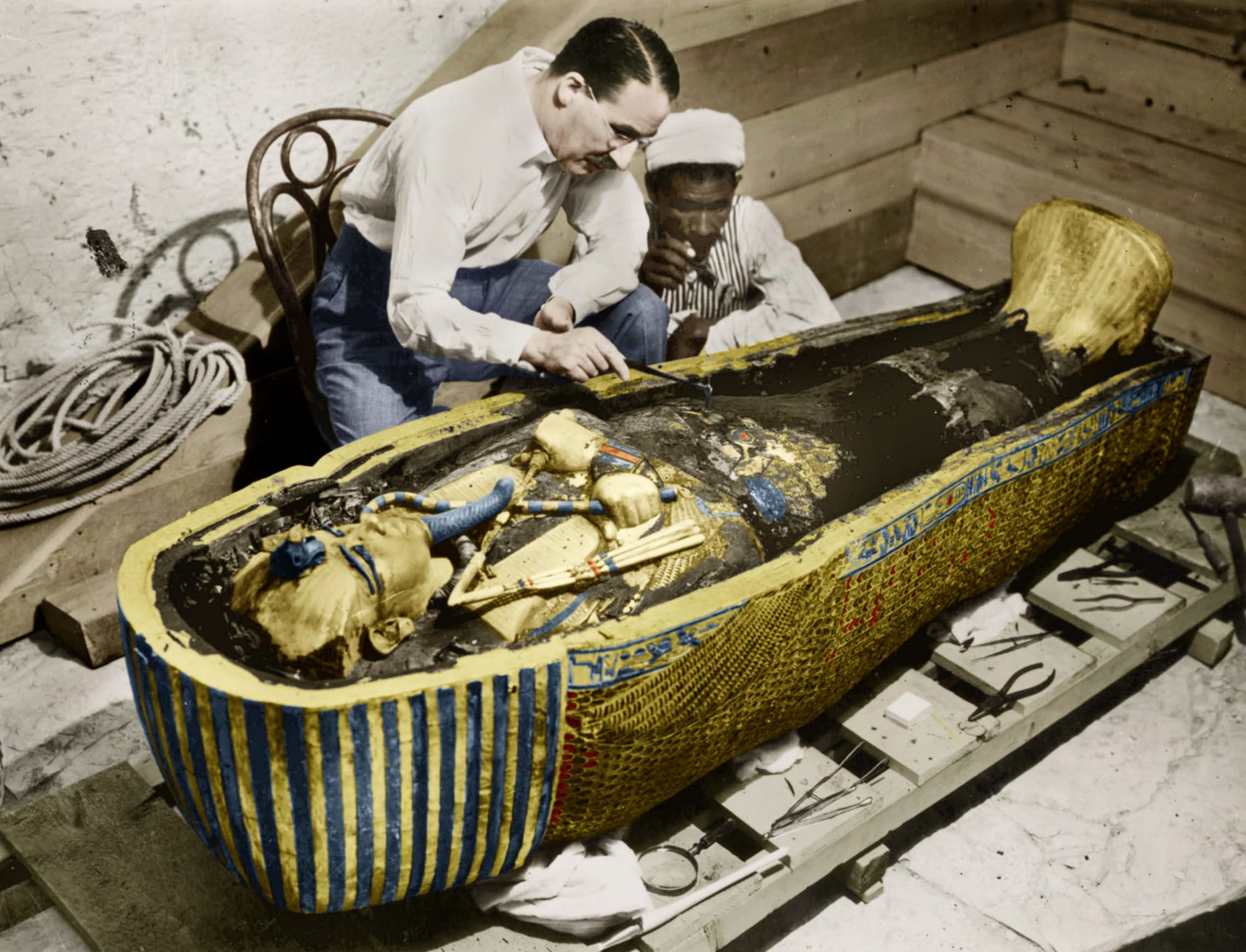
Photograph by Apic/Getty Images
4. The Rosetta Stone
In the summer of 1799, near the Egyptian town of Rashid (known to the Western world as Rosetta), soldiers in Napoleon Bonaparte’s army stumbled upon what would become one of the most important archaeological discoveries in human history. A slab of dark granodiorite, covered in strange inscriptions, lay half-buried in the earth. Measuring a little over a meter tall, the Rosetta Stone was soon recognized as something far greater than a mere artifact—it was the long-lost key to deciphering the language of the pharaohs.
Carved in 196 B.C. under the rule of Pharaoh Ptolemy V, the stone bore a decree inscribed in three scripts: ancient Egyptian hieroglyphics, the more simplified demotic script, and classical Greek. It was this tri-lingual composition that would, centuries later, unlock the mysteries of Egypt’s sacred texts. In 1822, French scholar Jean-François Champollion cracked the code, using the Greek translation to decode the hieroglyphs—a linguistic triumph that opened the door to reading thousands of years of Egyptian history, religion, and literature for the first time.
Today, the Rosetta Stone resides in the British Museum, though Egypt has repeatedly sought its return. Its discovery was not merely academic; it resurrected a lost civilization’s voice, granting modern scholars the ability to read the ancient world’s most enigmatic language once more.
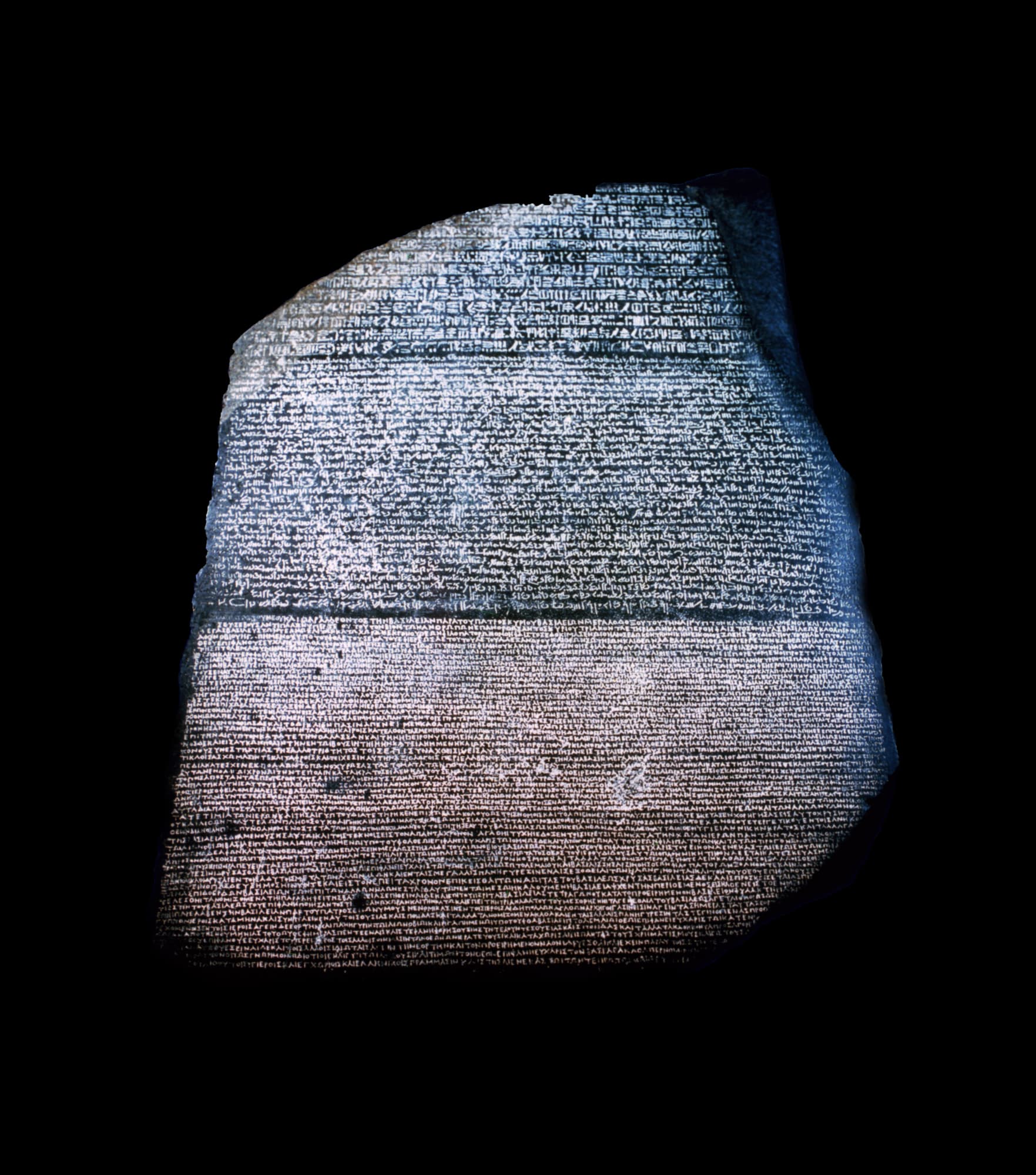
Photograph by Universal History Archive/UIG/Getty Images
5. Tomb of the Silver Pharaoh
In 1939, as Europe teetered on the brink of World War II, French Egyptologist Pierre Montet made a stunning discovery in the forgotten city of Tanis, the former capital of Egypt’s northern kingdom. There, beneath centuries of sand and rubble, he uncovered a burial chamber that rivaled even the splendor of King Tutankhamun’s tomb. The resting place belonged to Pharaoh Psusennes I of the 21st Dynasty—a ruler once lost to history but reborn through this remarkable find.
What set this tomb apart was not only the wealth of its contents but also their uniqueness. The pharaoh’s sarcophagus was crafted entirely from solid silver, a rare and precious material in ancient Egypt. Adorning his body was a golden mask of extraordinary beauty, inlaid with lapis lazuli and turquoise. The discovery shocked historians because it suggested that Egypt’s power and prosperity had endured far longer than previously believed.
Although Psusennes ruled more than three thousand years ago, his silver coffin gleamed as though it had been buried only yesterday—a breathtaking testament to Egypt’s enduring craftsmanship and reverence for eternity.

Photograph by Hulton-Deutsch Collection/Corbis/Getty Images
6. Queen Hatshepsut’s Mummy
Few figures in Egypt’s long history have fascinated scholars as much as Queen Hatshepsut, the formidable woman who declared herself pharaoh and ruled Egypt with unmatched confidence during the 15th century B.C. For centuries, her story was hidden—her name and likeness systematically erased from monuments by her successor, Thutmose III. But her legacy refused to vanish.
In 1903, archaeologist Howard Carter—years before his legendary discovery of Tutankhamun’s tomb—unearthed an empty sarcophagus in the Valley of the Kings bearing Hatshepsut’s name. Her mummy, however, was missing, sparking one of Egyptology’s greatest mysteries. Over a century later, in 2007, a breakthrough came when scientists identified her remains by matching a lost tooth found in a canopic jar (used to store mummified organs) to a gap in the jaw of an unidentified female mummy.
This revelation confirmed that the powerful queen had finally been found. Hatshepsut’s rediscovery not only restored her rightful place in history but also shed light on the extraordinary women who shaped ancient Egypt’s destiny. Today, her mummy rests safely in the Egyptian Museum in Cairo—a silent symbol of resilience and forgotten power.
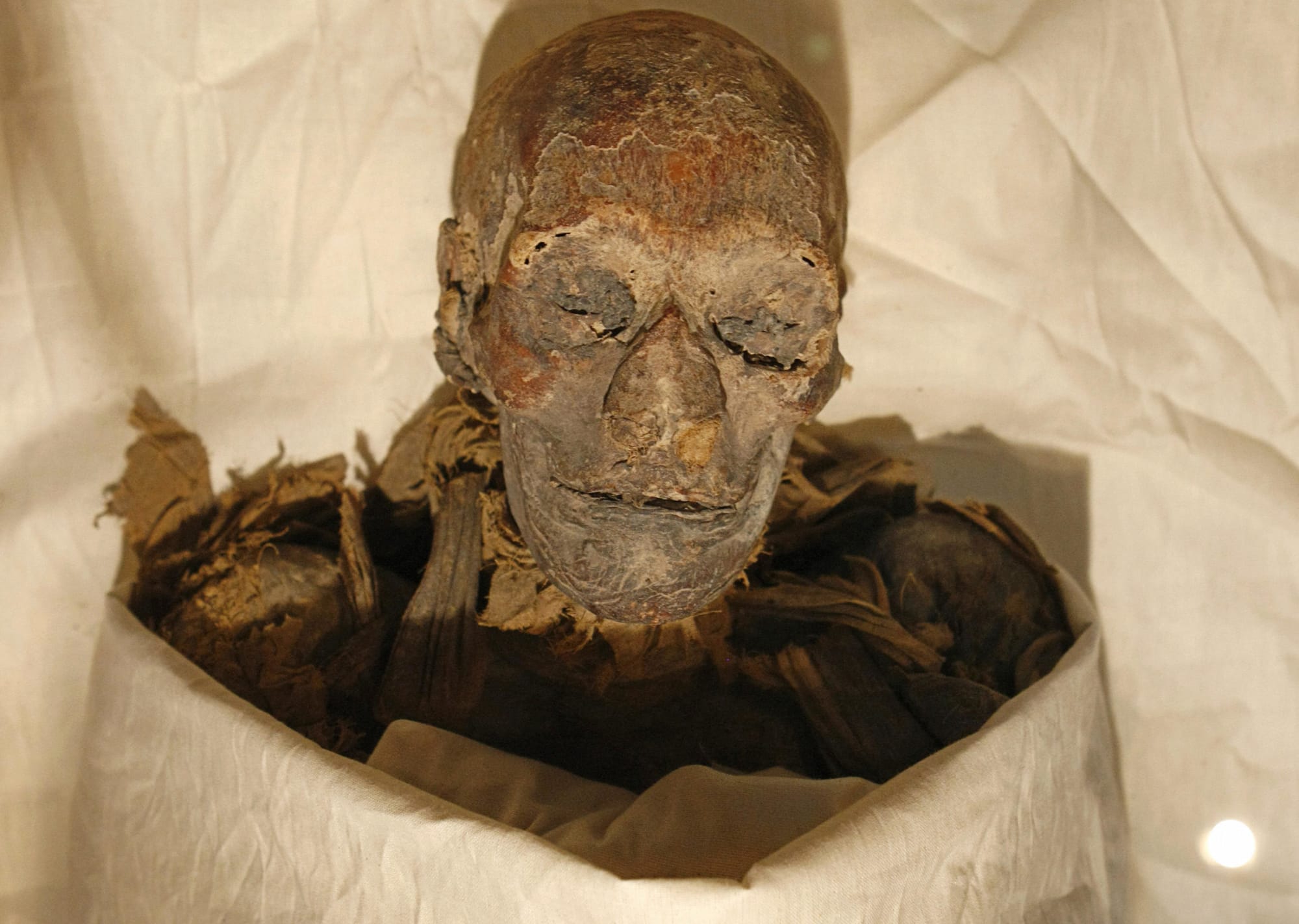
Photograph by Cris Bouroncle/AFP/Getty Images
7. The Valley of the Golden Mummies
In the mid-1990s, deep in Egypt’s Western Desert near the oasis of Bahariya, archaeologists led by Dr. Zahi Hawass made one of the most breathtaking finds of modern times. While excavating an ancient necropolis, they unearthed more than a hundred beautifully preserved mummies, some adorned with gold masks and intricate decorations. As the dig continued, the sheer scale of the discovery became clear—the site could contain as many as ten thousand mummies, spanning centuries of Egyptian history.
Dubbed the “Valley of the Golden Mummies,” this vast burial ground revealed a fascinating cross-section of Egyptian society. Some mummies were encased in lavish gilded coffins, their faces shimmering in eternal repose; others were wrapped in linen or laid in simple clay sarcophagi. The diversity reflected both wealth and status—proof that belief in the afterlife transcended class.
This discovery transformed our understanding of Egypt’s Greco-Roman period, showing how deeply Egyptian religious customs endured even under foreign rule. The Valley of the Golden Mummies remains one of the largest and most mysterious burial sites ever discovered in Egypt, a golden bridge between its ancient and later eras.

Photograph by Cris Bouroncle/AFP/Getty Images
8. Ramses II’s Mummy
No pharaoh embodied the grandeur of Egypt’s empire more than Ramses II, often called Ramses the Great. Born around 1302 B.C., he reigned for over sixty years—an era of monumental building projects, military campaigns, and artistic flourishing. The temples at Abu Simbel, Luxor, and Karnak all stand as enduring testaments to his ambition.
Ramses’ mummy has a history almost as dramatic as his life. Originally buried in the Valley of the Kings, his remains were later moved by priests to protect them from tomb robbers. In 1881, archaeologists rediscovered his mummy in a hidden cache at Deir el-Bahri, alongside dozens of other royal mummies. When scientists examined it, they found him remarkably well preserved, his sharp features and flowing hair still visible after more than three millennia.
In the 1970s, Ramses II made headlines again when his mummy was flown to Paris for emergency conservation work—complete with an Egyptian passport listing his occupation as “King (deceased).” Today, he lies in the National Museum of Egyptian Civilization, a silent yet commanding presence from Egypt’s golden age.

Photograph by Patrick Landmann/Getty Images
9. Temples at Abu Simbel
Carved directly into a sandstone cliff overlooking the Nile’s western bank, the twin temples of Abu Simbel stand as one of humanity’s most awe-inspiring monuments to power and devotion. Constructed around 1244 B.C. under the reign of Ramses II, these temples were meant to immortalize both the pharaoh himself and his beloved queen, Nefertari. The colossal seated statues of Ramses that guard the entrance rise nearly seventy feet high, their calm, confident gazes fixed upon eternity.
The larger temple was designed so precisely that twice a year—on Ramses’ birthday and on the day of his coronation—the first rays of the rising sun pierce the inner sanctuary to illuminate statues of Ramses and the gods with whom he shared divine company. Such architectural alignment remains a marvel even by modern engineering standards.
Over centuries, the desert winds buried the temples in sand, concealing them until the early nineteenth century. In 1817, Italian explorer Giovanni Belzoni uncovered their entrance, revealing their splendor to the modern world. Then, in the 1960s, faced with the rising waters from the construction of the Aswan High Dam, engineers undertook an unprecedented feat—they carefully cut the temples into thousands of massive blocks and relocated them piece by piece to higher ground.
Today, Abu Simbel remains one of the most moving testaments to both ancient and modern human ingenuity: an act of devotion, power, and preservation that spans millennia.
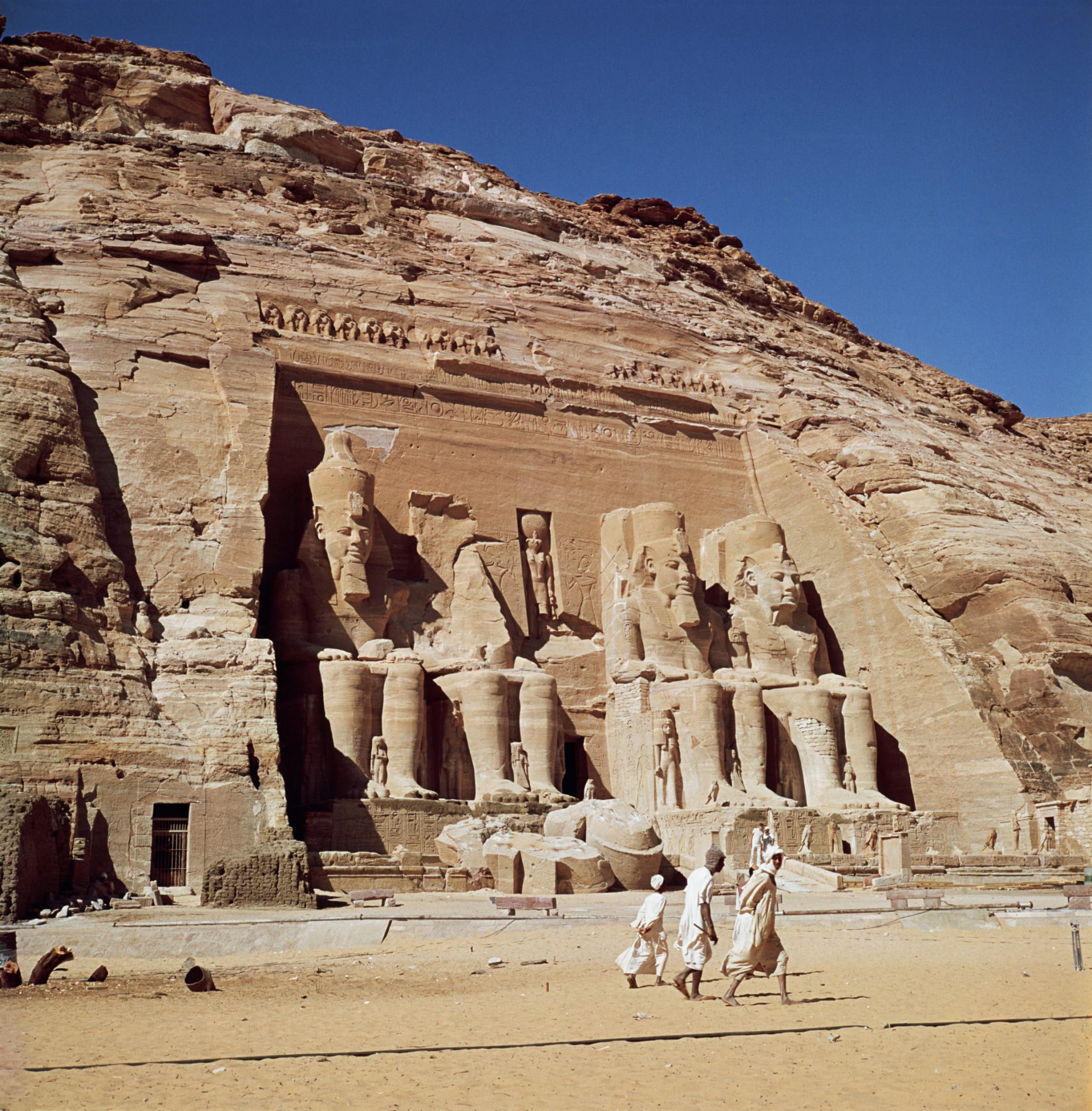
Photograph by Roger Wood/Corbis/VCG/Getty Images
10. Temple of Bastet
In the heart of modern Alexandria, beneath layers of bustling streets and urban noise, archaeologists made a remarkable discovery in 2010—a temple more than two thousand years old, dedicated to the feline goddess Bastet. Revered as the protector of women, home, and fertility, Bastet symbolized both tenderness and fierce guardianship. Depicted with the head of a lioness or domestic cat, she represented the dual nature of divinity in ancient Egypt: nurturing yet powerful.
This temple, believed to have been built by Queen Berenice II, wife of Pharaoh Ptolemy III, dates to around 246–222 B.C. Its excavation revealed over six hundred cat statues, each carved with exquisite detail. Their presence confirmed that reverence for Bastet endured well into Egypt’s Ptolemaic period, even as Greek influence spread through the region. The temple’s discovery was more than a simple archaeological success—it reaffirmed how cultural identity and spiritual belief remained deeply rooted in Egyptian life despite centuries of foreign rule.
Standing beneath Alexandria’s modern skyline, the unearthed Temple of Bastet connects the contemporary world to an ancient past where even humble creatures like cats held divine significance and were honored as symbols of grace and eternity.

Photograph courtesy of Egypt’s Supreme Council of Antiquities
The Legacy That Endures
The rulers of Egypt—its pharaohs, queens, and priests—built their tombs and temples not merely as memorials, but as bridges between worlds. Each discovery unearthed from the sands reveals another piece of this vast puzzle, showing a civilization that believed profoundly in continuity: that death was not an end, but a new chapter in an unbroken story.
The Old, Middle, and New Kingdoms each added new dimensions to Egypt’s identity—refining architecture, developing mathematics, perfecting agriculture, and expanding their command of art and symbolism. Even today, new tombs and hidden chambers continue to surface, drawing the eyes of archaeologists and dreamers alike.
Every sarcophagus opened, every symbol translated, brings us closer to understanding a world that shaped human imagination like few others. The relics of ancient Egypt remind us that history is never truly buried—it sleeps, waiting patiently beneath the sands, until curiosity once again awakens it.


